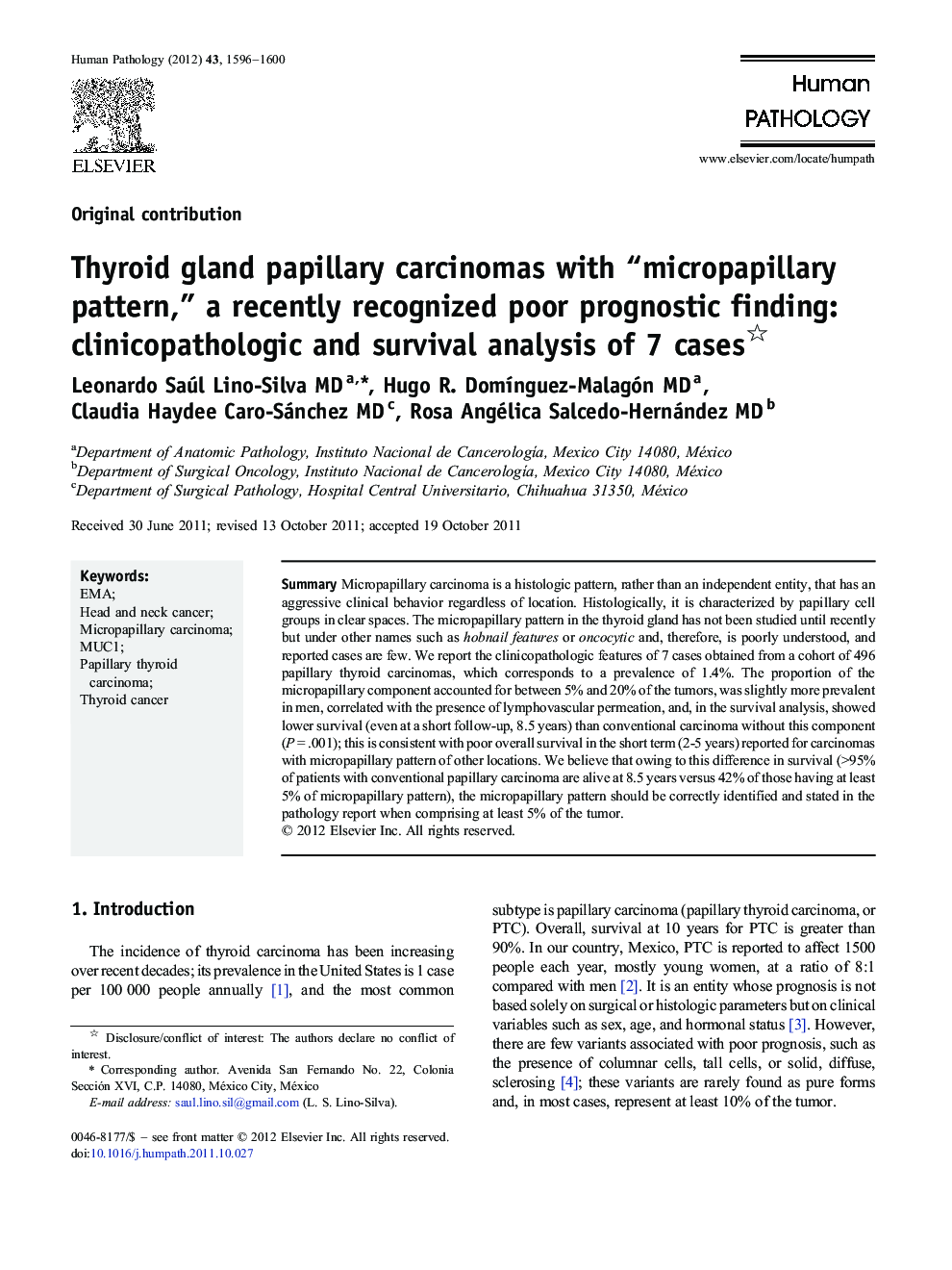| Article ID | Journal | Published Year | Pages | File Type |
|---|---|---|---|---|
| 4133123 | Human Pathology | 2012 | 5 Pages |
SummaryMicropapillary carcinoma is a histologic pattern, rather than an independent entity, that has an aggressive clinical behavior regardless of location. Histologically, it is characterized by papillary cell groups in clear spaces. The micropapillary pattern in the thyroid gland has not been studied until recently but under other names such as hobnail features or oncocytic and, therefore, is poorly understood, and reported cases are few. We report the clinicopathologic features of 7 cases obtained from a cohort of 496 papillary thyroid carcinomas, which corresponds to a prevalence of 1.4%. The proportion of the micropapillary component accounted for between 5% and 20% of the tumors, was slightly more prevalent in men, correlated with the presence of lymphovascular permeation, and, in the survival analysis, showed lower survival (even at a short follow-up, 8.5 years) than conventional carcinoma without this component (P = .001); this is consistent with poor overall survival in the short term (2-5 years) reported for carcinomas with micropapillary pattern of other locations. We believe that owing to this difference in survival (>95% of patients with conventional papillary carcinoma are alive at 8.5 years versus 42% of those having at least 5% of micropapillary pattern), the micropapillary pattern should be correctly identified and stated in the pathology report when comprising at least 5% of the tumor.
